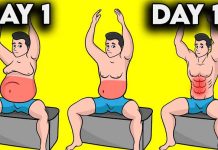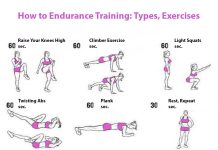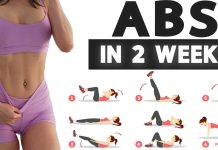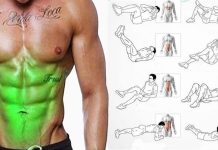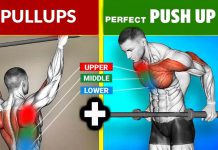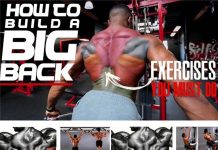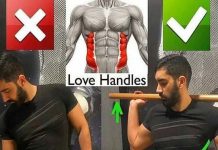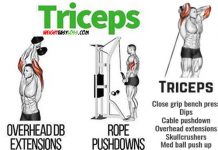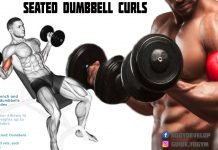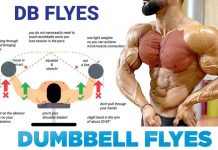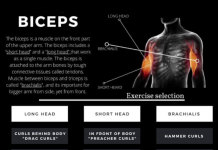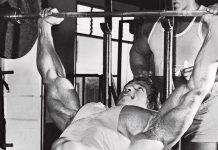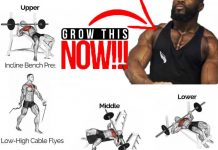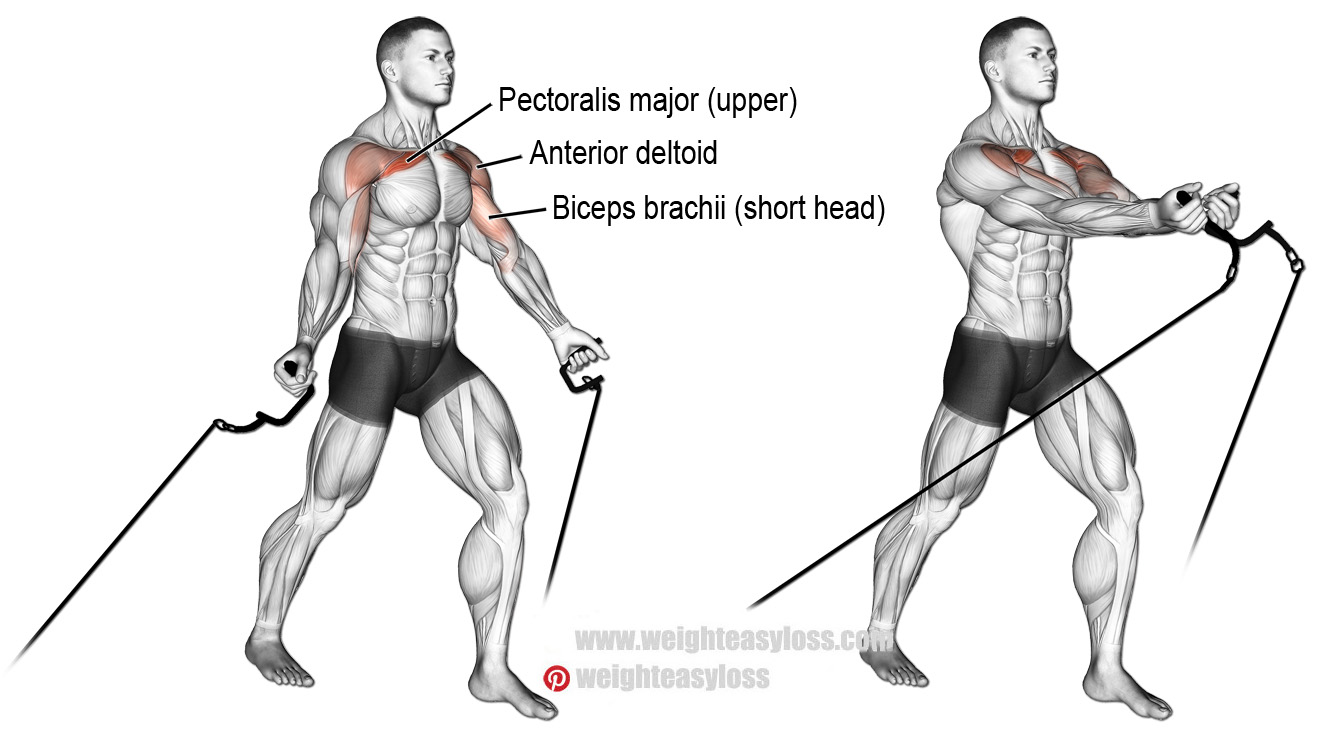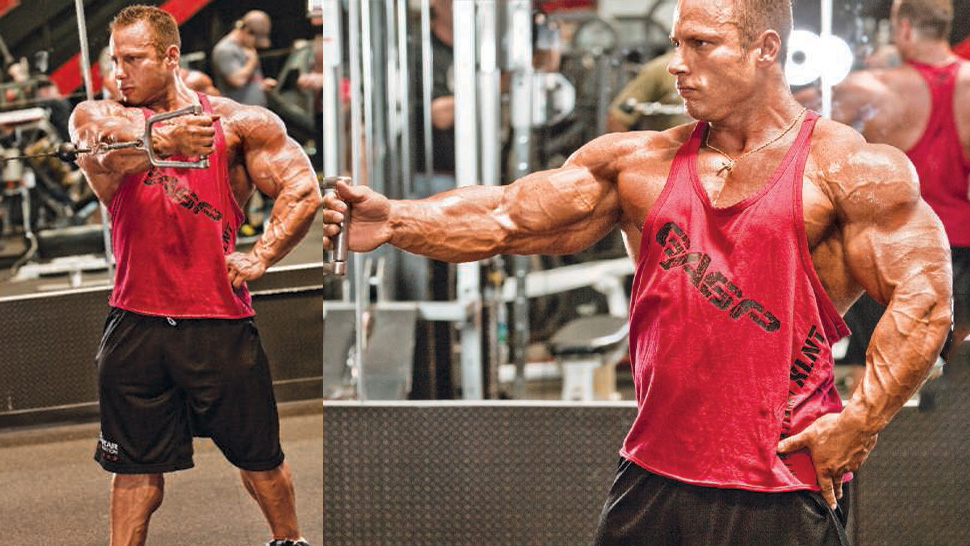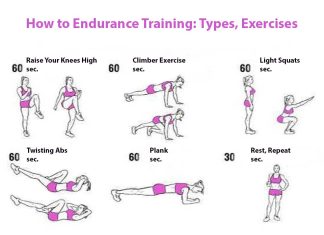The Exercise Chest Underhand Dumbbells Fly
Chest Underhand Dumbbells Fly – is an accentuated isolated exercise for the upper chest and anterior beam deltoid muscle.
It is the main load of the chest muscle and who is moves his hand forward and upward. But if you shift the lifting of the dumbbells to the center of the chest then it also employs the inner pectoral muscles.

[wp_ad_camp_1]
| Content |
- Lateral deltoid;
- Bottom/middle of the trapezoid;
- The clavicle of the large pectoralis muscle;
- Anterior notched muscles.
The role of stabilizers is performed by:
- Top trapezium;
- Muscle lifting the scapula;
- Extensors of the hand.
Chest Underhand Dumbbells Fly Exercise is very similar with Low-Pulley Cable Fly
Benefits Chest Underhand Dumbbells Fly
[wp_ad_camp_2]
Performing lifts Chest Underhand Pec, the athlete receives the following advantages:
- isolated front beam operation shoulder ;
- elaboration of each shoulder separately;
- increase in strength (progress in the weight) in some basic exercises – bench press
- incline, army press;
- general strengthening of the shoulder bag;
- reduction to a minimum of shoulder injuries;
- development of the muscles of the back and chest – trapezium, raising the scapula and
- large pectoral;
- the ability to work with one hand while temporarily “failing” another;
- maintenance of muscle balance (elimination of muscle asymmetry);
- the creation of an array of front deltas and chest, the development of their thickness;
- sharpening of the form and relief;
- an obvious separation of the front beams shoulder from the middle chest;
- more comfortable execution in comparison with the barbell lifts.
Technique of Execution Chest Underhand Dumbbells Fly & Cable Fly
[wp_ad_camp_4]
Exercise frontal lifts of dumbbells is not very difficult, but it requires knowledge of some technical subtleties and nuances. Therefore, we will discuss them in more detail in the step-by-step guide.
Step # 1.
Pick up adequate on weight dumbbells and take their grip from above. Lower your arms to the level of your hips, but do not touch each other’s dumbbells and do not unbend your arms completely at the bottom point. Put your feet on the width of your shoulders, keep your body straight. This is your starting position.
Step # 2.
Take a breath and while keeping the body still, raise the left dumbbell in front of you with a slight bend in the elbow and shift to the center of the chest, so we will get an emphasis on the pectoral muscle and not on the front beam of the delta. As soon as you pass the line of shoulder level, exhale and stay at the top point of the trajectory. Then slowly lower the dumbbell down to its original position and do the same for the right hand. Carry out the set number of repetitions.
Do 4 sets of 10-12 repetitions with the maximum weight that you can do with difficulty last repetition!
Conclusion
- Necessarily, when lifting dumbbells, the elbows should be slightly bent, so the load is removed from the elbow joints.
- Raise the dumbbells slightly above shoulder level, so the load will be more accurate, and it will as much as possible pump the chest.
- You can also lift in front of you with the help of a weight disk or barbell, with this embodiment of the exercise, arms are turned around and the palms are looking at each other, but with such variant, involved the front bundle of deltoid muscles.
- Do not chase weight, without breaking the technique you must do at least 8 repetitions.
- You can also replace exercise with dumbbells on the lower block in the crossover, the peculiarity is that when you lower the dumbbells, the load on the shoulders decreases, and in the crossover, it is the same both at the upper and lower points because of is weight which is constantly all-time in motion.
- Try not to swing the body, lift the weight with the force of the pectoral muscles, and not at the expense of inertia a dumbbell.
- If you feel discomfort in the lower back, wear a belt, it will protect the lower back from unexpected pain.












